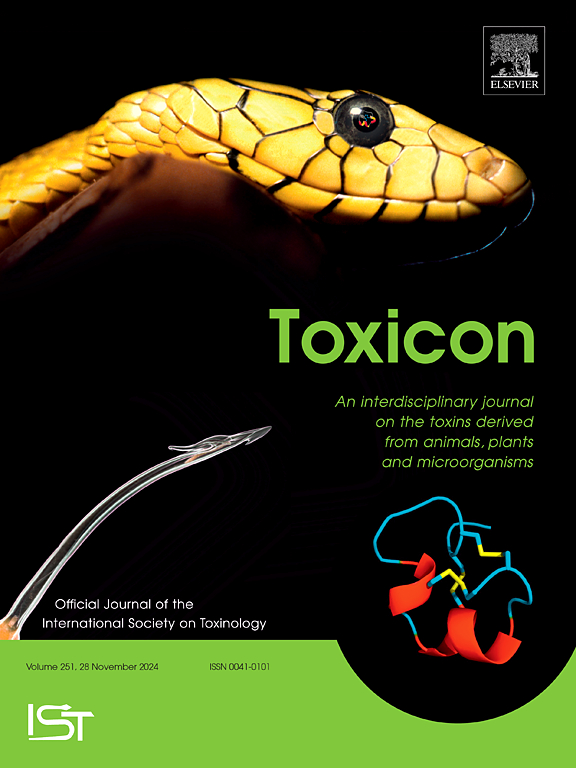细菌毒素解毒技术:获得有效类毒素疫苗的途径
IF 2.6
4区 医学
Q2 PHARMACOLOGY & PHARMACY
引用次数: 0
摘要
细菌毒素在许多病原体的毒力中起着关键作用,导致破伤风、白喉、肉毒杆菌中毒和entrotoxemia等严重疾病。作为关键的毒力因子,这些毒素在被感染的宿主中引起显著的组织损伤和疾病表现。通过由毒素灭活形式组成的类毒素疫苗接种这些毒素,是预防毒素介导疾病的一项重要战略。然而,制造有效的类毒素疫苗需要细致的解毒过程,以确保毒性丧失,同时保留天然毒素固有的免疫原性。这篇综述全面评价了用于解毒细菌毒素的各种方法,强调了它们的优点、局限性和对疫苗开发的影响。通过对功效、稳定性、残留毒性和临床适用性的详细比较,我们证明,尽管利用化学试剂(如甲醛)的传统方法仍被广泛使用,但基因失活和蛋白质工程等新兴技术呈现出显着的优势。这些创新有望推动开发持久和不可逆的类毒素疫苗,以保护公众健康,并有助于未来疫苗配方的改进。最终,这种知识综合旨在指导未来的研究工作,并促进设计更安全、更有效的类毒素疫苗,以对抗产生毒素的细菌构成的公共卫生威胁。本文章由计算机程序翻译,如有差异,请以英文原文为准。

Detoxification techniques for bacterial toxins: A pathway to effective toxoid vaccines
Bacterial toxins play a critical role in the virulence of many pathogens, leading to serious diseases such as tetanus, diphtheria, botulism, and entrotoxemia. As key virulence factors, these toxins cause significant tissue damage and disease manifestations in infected hosts. Vaccination against these toxins through toxoid vaccines, composed of inactivated forms of the toxins, represents a vital strategy for preventing toxin-mediated diseases. However, creating effective toxoid vaccines necessitates meticulous detoxification processes that ensure the loss of toxicity while retaining the immunogenic properties inherent in the native toxins. This review offers a comprehensive evaluation of the diverse methodologies employed for detoxifying bacterial toxins, highlighting their advantages, limitations, and implications for vaccine development. By detailing comparisons of efficacy, stability, residual toxicity, and clinical applicability, we demonstrate that while traditional methods utilizing chemical reagents (such as formaldehyde) remain widely used, emerging technologies like genetic inactivation and protein engineering present significant advantages. These innovations promise to advance the development of durable and irreversible toxoid vaccines that protect public health and contribute to future vaccine formulation improvements. Ultimately, this knowledge synthesis aims to guide future research efforts and facilitate the design of safer and more effective toxoid vaccines to combat the public health threats posed by toxin-producing bacteria.
求助全文
通过发布文献求助,成功后即可免费获取论文全文。
去求助
来源期刊

Toxicon
医学-毒理学
CiteScore
4.80
自引率
10.70%
发文量
358
审稿时长
68 days
期刊介绍:
Toxicon has an open access mirror Toxicon: X, sharing the same aims and scope, editorial team, submission system and rigorous peer review. An introductory offer Toxicon: X - full waiver of the Open Access fee.
Toxicon''s "aims and scope" are to publish:
-articles containing the results of original research on problems related to toxins derived from animals, plants and microorganisms
-papers on novel findings related to the chemical, pharmacological, toxicological, and immunological properties of natural toxins
-molecular biological studies of toxins and other genes from poisonous and venomous organisms that advance understanding of the role or function of toxins
-clinical observations on poisoning and envenoming where a new therapeutic principle has been proposed or a decidedly superior clinical result has been obtained.
-material on the use of toxins as tools in studying biological processes and material on subjects related to venom and antivenom problems.
-articles on the translational application of toxins, for example as drugs and insecticides
-epidemiological studies on envenoming or poisoning, so long as they highlight a previously unrecognised medical problem or provide insight into the prevention or medical treatment of envenoming or poisoning. Retrospective surveys of hospital records, especially those lacking species identification, will not be considered for publication. Properly designed prospective community-based surveys are strongly encouraged.
-articles describing well-known activities of venoms, such as antibacterial, anticancer, and analgesic activities of arachnid venoms, without any attempt to define the mechanism of action or purify the active component, will not be considered for publication in Toxicon.
-review articles on problems related to toxinology.
To encourage the exchange of ideas, sections of the journal may be devoted to Short Communications, Letters to the Editor and activities of the affiliated societies.
 求助内容:
求助内容: 应助结果提醒方式:
应助结果提醒方式:


